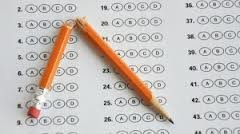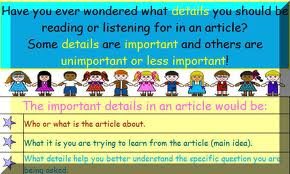Assessment Services
Basic Assessment
Currently elementary and middle school, the curriculum is mastery-based, meaning students must score 80 percent or higher on an assessment before moving on to the next learning objective. Short  answer or multiple choice assessments are given at the end of most lessons in K-8 and are administered and recorded. In high school, teachers monitor student’s progress and grade tests and assignments.
answer or multiple choice assessments are given at the end of most lessons in K-8 and are administered and recorded. In high school, teachers monitor student’s progress and grade tests and assignments.
The new Common Core Standards have required K-12 test and assessment developers to rethink how we assess learning for the challenges of the digital world that lie ahead. As part of all I.pel curriculum integrated assessment software will be used to evaluate both students and teachers. Not only is the K-12 education evolution bringing digital curriculum to the classroom assessment programs have to be developed to keep pace. (See K-12 Testing and Assessment Standards)
Computer Aided Assessment
Computer Aided Assessment, also known as E-assessment, ranges from automated multiple-choice tests to more sophisticated systems is becoming more common and is the basis of the Common Core Standards assessment platform. Assessment software has a primary purpose of assessing and testing students in a virtual environment. It allows students to complete tests and examinations using a computer or a laptop, usually networked.
 I.pel assessment software will scores each test transcript and output results for each student. Feedback will be geared towards a student’s specific mistakes at which time the software will guide the student through a series of questions adapting to what the student appears to have learned or not learned.
I.pel assessment software will scores each test transcript and output results for each student. Feedback will be geared towards a student’s specific mistakes at which time the software will guide the student through a series of questions adapting to what the student appears to have learned or not learned.
The assessment software, which will be available in various delivery methods, will be a self-hosted, online hand-held voting system. i.pel will be using both proprietary and open-source systems software. This computer-based assessment software methodology will be PPA-2 (Plan, Prove, and Assess) which creates and conduct computer based online examinations. The initial formative assessment will “sift” out the incorrect answers by follow an online formative assessment structure.
Using this method the teacher can then explain to the student how he/she should have handled each question. The student then gets at least one practice at each slight variation of sifted out questions. This is the formative learning stage with the next stage being a summative assessment by a new set of questions only covering the topics previously taught. The “Skill” Evaluation Lab is an example of this type of software.
Software that supports sequences of activities that can be both adaptive and collaborative is a learning design concept that is activity enabled. eLearning has been replacing the traditional settings due to its cost effectiveness
Other assessment software platforms include both Learning Management System (LMS) and Learning Content Management System (LCMS) (See K-12 Testing and Assessment Standards-Computer Aided Assessment). LMS is software used for delivering, tracking and managing training/education. LMSs range from systems for managing training/educational records to software for distributing courses over the Internet and offering features for online collaboration. LCMS is software for author content (courses, reusable content objects). An LCMS may be solely dedicated to producing and publishing content that is hosted on an LMS, or it can host the content itself.
A LMS allows for teachers and administrators to track attendance, time on task, and student progress. LMS also allows for not only teachers and administrators to track these variables but parents and students as well. Parents can log on to the LMS to track grades. Students log on to the LMS to submit homework and to access the course syllabus and lessons.
Moodle is an example of open-source software with an assessment component that is gaining popularity. Other popular international assessment systems include QuestionMark and EvaluNet XT.
Developing Test Questions
A standardized test is a test that is administered and scored in a consistent, or “standard”, manner. Standardized tests are designed in such a way that the questions, conditions for administering, scoring procedures, and interpretations are consistent and are administered and scored in a predetermined, standard manner (See K-12 Testing and Assessment Standards – Standardize Tests).
Any test in which the same test is given in the same manner to all test takers is a standardized test. Standardized tests need not be “high-stakes tests,” “time-limited tests,” or “multiple-choice tests.” The opposite of a standardized test is a “non-standardized test.” Non-standardized testing gives significantly different tests to different test takers, or gives the same test under significantly different conditions (e.g., one group is permitted far less time to complete the test than the next group), or evaluates them differently (e.g., the same answer is counted right for one student, but wrong for another student).
The opposite of a standardized test is a “non-standardized test.” Non-standardized testing gives significantly different tests to different test takers, or gives the same test under significantly different conditions (e.g., one group is permitted far less time to complete the test than the next group), or evaluates them differently (e.g., the same answer is counted right for one student, but wrong for another student).
(The following is an abstract from “Standardized Tests for Everyone? In The Internet Age, That’s The Wrong Answer,” by Kathy N. Davidson)
The Kansas Silent Reading Test, sometimes called the “item-response” or “bubble” test is the current American public school end-of-grade exam, required under the No Child Left Behind law, that are fill in the circles; there is only one right answer; and stop when time is called. Intended to measure “lower-order thinking” this form of testing is now the gold standard for just about everything, from No Child Left Behind tests to college entrance exams to tests for graduate and professional schools.
It is intended that under the new Common Core Standards K-12 schools are to become more a place where students learn how to educate themselves rather than a place in which to be educated. Multiple-choice exams do not equip kids for either the information avalanche or the fine print that they encounter online every day. They do not measure complex, connected, interactive skills or teach kids about credibility, security, privacy, intellectual property and other bases of their online lives, after all, would take time away from the tested subjects that lead to merits or demerits, funding or reduced funding, depending on exam scores.
Right now, we have teachers, out of self-preservation and to protect their schools and their students, teaching to a test that was designed in the era of the Model T. We are 15 years into the information age. It’s not as simple as filling in the bubbles.
In accordance with the new Smarter Balanced testing which will replace the old STARR testing, i.pel is developing curriculum “non-standardized” test questions in accordance to the new Common Core Standards with a focus on computer-based ‘through-course assessments’ in each grade combined with streamlined end of year tests, including performance tasks and adaptive online exams. The final decision of which assessment to use will be determined by individual state education agencies. Fewer selected and constructed response test items will be used.
There will be selected response with multiple correct answers. In selected response, students will have to write, and then defend their answer. They will have to go in depth to show their understanding. This new form of testing will reveal more about a student’s understanding and where they need improvement than the old STARR testing did, with more complex questions that change based on a student’s answer to identify exactly where a student might be confused about a problem. More information regarding each student will be gained, through a wide range of question, from these tests.
In the English Language Arts (ELA) sector the goal is to have students read challenging texts that will build their vocabulary and background knowledge. As a student progresses through the grades, the nonfiction proportion of materials will increase as will certain critical content for all students, including: classic myths and stories from around the world, America’s Founding Documents, foundational American literature, and Shakespeare the focus of which is to prepare students for college and careers.
Test questions will be in formal English in reading and writing but will also consider that colleges and contemporary careers will require students to make wise, skilled decisions about how to express themselves through language in a variety of contexts. Since media and technology are intertwined with every student’s life and in school in the 21st century, skills related to media use, which includes the analysis and production of various forms of media, will also be tested. The tests will measure student’s connected and complex interactive skills such as security, privacy, intellectual property and other bases of their online lives.
i.pel math testing will conform to the Mathematical Standards whose goal is to achieve greater focus and coherence in the curriculum. The Mathematics Standards which include Standards for Mathematical Practice and Standards for Mathematical Content mandate eight principles of mathematical practice be taught:
- Make sense of problems and persevere in solving them.
- Reason abstractly and quantitatively.
- Construct viable arguments and critique the reasoning of others.
- Model with mathematics.
- Use appropriate tools strategically.
- Attend to precision.
- Look for and make use of structure.
- Look for and express regularity in repeated reasoning.
These practices are to be taught in every grade from kindergarten to twelfth grade. Details of how these practices are to be connected to each grade level’s mathematics content are left to local implementation of the Standards.
For a balanced comparability tests will have advanced and proficient questions. Since testing is a complex activity i.pel considers, how many questions per test; how difficult should the questions be; as the student progresses should harder or easier questions be offered; should every student get the same questions.
One of the problems in testing is how to differentiate between the smart students and the C, D, and disenfranchised students. Smart kids might get all the answers right, but we won’t know exactly what they have learned or if they should be ask more questions.

Recent Comments